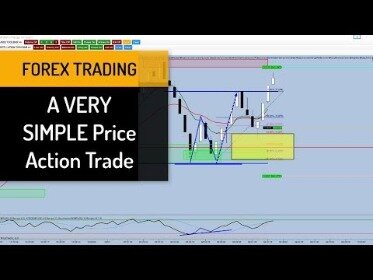Contents:


The bullish harami is a two-candlestick pattern that appears in a downtrend. It’s a variation of the harami candlestick pattern, which is defined as a candle where the second candle’s body is completely contained within the first candle. In other words, the second candle’s body has to be completely inside the first candle. The bullish harami candlestick functions almost randomly with reversals taking a slight edge over continuations by 53% to 47%. That means you probably can’t guess the breakout direction with any accuracy.
- Learn how to combine it with trend channels and MACD divergences for best results.
- Generally, the Harami pattern candlestick shows a changing trend.
- Even though the word Harami appears in the Hindi language that is not what the context of this article refers to.
- The content is provided on an as-is and as-available basis.
- The homing pigeon candle is similar to the bullish harami.
When combined, a bullish harami Harami pattern and a trendline break might be interpreted as a potential sell signal. A bullish Harami occurs at the bottom of a downtrend when there is a large bearish red candle on Day 1 followed by a smaller bearish or bullish candle on Day 2. The complete opposite occurs in a bearish Harami pattern, when the first candle closes higher than its opening price, with a large green body.
Bullish Harami Cross
It tells them it would be valuable to do more analysis to purchase or sell their existing investment but will not always need action following the original indicator. The bullish hamari occurs when the original trend and candlestick are downward, hinting at a bullish reversal. Alternatively, the bearish hamari occurs when the original trend and candlestick are upward, and doji is fully contained by the previous candlestick, hinting at a bearish reversal.
Technical View Bullish Harami pattern on weekly scale raises possibility of upward journey in Nifty – Moneycontrol
Technical View Bullish Harami pattern on weekly scale raises possibility of upward journey in Nifty.
Posted: Fri, 30 Dec 2022 08:00:00 GMT [source]
The bullish harami candlestick pattern is a common and useful tool used in the art of Japanese Candlestick Charting. The Bullish Harami Pattern can signal a potential reversal or continuation of a trend and is used by traders focused on swing trading and long term positions. A technical analysis using the Harami candlestick pattern makes it possible to quickly identify an existing downtrend. It will allow traders to look for signals that there is a slowdown or reversal as far as momentum is concerned. During the technical analysis it is important to always ensure that the size of the small candle will never exceed 25% of the large candle. During the process it will be seen that the entire bullish candle is encircled by the body of the previous bearish candle.
The second Harami pattern shown in Chart 2 above is a bearish reversal Harami which could also trigger a buy signal. On the second candle, the market gapped down at the open. Day 2 showed a bearish candlestick which made the bearish Harami look even more bearish. Identifying the bullish harami pattern on a trading chart is fairly straightforward and easy. However, finding the pattern is usually not enough and you’ll need to combine it with other indicators in order to confirm the pattern. Without all these additional pieces of information, it is too risky to depend solely on this one pattern to take a position.
https://trading-market.org/ any financial instrument involves a significant risk of loss. Commodity.com is not liable for any damages arising out of the use of its contents. When evaluating online brokers, always consult the broker’s website. Commodity.com makes no warranty that its content will be accurate, timely, useful, or reliable. Here is an easy-to-follow strategy for trading the Harami forex pattern, with an added Moving Average Convergence Divergence indicator.
Forex, Gold & Silver:
Please ensure that you fully understand the risks involved. You should have seen how the pattern forms, and you should now understand why this pattern forms. The pattern generated 23 pips, which isn’t bad, especially considering the risk outlay.
The technical storage or access that is used exclusively for anonymous statistical purposes. Trading forex on margin carries a high level of risk and may not be suitable for all investors. Because if the price doesn’t hit our entry-level, we don’t enter and therefore we don’t risk our capital, so we can move on with another trade. The TC2000 Inside Day/Bar Stock Scan is a quick and efficient way to find stocks that have traded entirely within the range of the proceeding bar. Each of these scans are sold separately but this bundle package is available for traders who want both the bull and bear versions of the same scan criteria. Instead of buying each separately at full retail price, get both together for a fraction of the cost.

Below, we are going to show you how to confirm the bullish harami pattern and find good entry and exit levels by using the RSI, MACD, and Fibonacci ratios. In this article, we’ll explain what is the bullish harami pattern, what are its characteristics, and how to identify and trade this charting pattern. The Harami Cross pattern, just like the regular Harami pattern, is a candlestick pattern that can be a Bullish or Bearish trend reversal based on where it is positioned on the chart. Still, the best approach to use the harami pattern is to combine it with several parts of technical indicators like moving averages and Bollinger Bands.
How does the Harami pattern look in real life?
A Bearish Harami Candle is formed when there is a large bullish candlestick, followed by a smaller bearish candlestick that is within the range of the first candle. A Bullish Harami Candle is formed when there is a large bearish candlestick, followed by a smaller bullish candlestick that is within the range of the first candle. The risk-averse will initiate the trade the day near the close of the day after P2, provided it is a blue candle day, which in this case is. Dark Cloud Cover is a two-candlestick pattern that is created when a down candle opens above the close of the prior up candle, then closes below the midpoint of the… The Harami is a trend reversal pattern and must appear in an existing trend. In case of a bearish harami, you should place a sell-stop slightly below the bigger candlestick.
Unlock our free video lessons and you will learn the exact chart patterns you need to know to find opportunities in the markets. And here is another example where a bullish harami occurred, but the stoploss on the trade triggered a loss. The risk-averse can initiate a long trade at the close of the day after P2, only after confirming that the day is forming a blue candle. The market gains strength on P2 and manages to close on a positive note, thus forming a blue candle.
The second candle in the pattern opens at the first candle’s closing price, and has a red body that is contained within the body of the first. The bearish version of the Harami pattern tends to appear after a period of price rises. The risk-taker will initiate the trade on day 2, near the closing price of 125. The risk-averse will initiate the trade on the day after P2, only after ensuring it forms a red candle day. In the above example, the risk-averse would have avoided the trade completely. The market continues to trade lower to an extent where it manages to close negatively forming a red candle day.
The aggressive method relies on entering a short position as soon as the low of the smaller red candle is broken — as indicated by the blue aggressive sell entry level on the chart above. HowToTrade.com takes no responsibility for loss incurred as a result of the content provided inside our Trading Room. By signing up as a member you acknowledge that we are not providing financial advice and that you are making the decision on the trades you place in the markets. We have no knowledge of the level of money you are trading with or the level of risk you are taking with each trade. Just like the Bullish Harami pattern, after noticing this trend, you should look for a confirmation which will ideally show up as a bearish candlestick right after the Bearish Harami pattern.
TC2000 Inside Day/Bar Stock Scan
However, other techniques can be used simultaneously to determine the optimal exit strategy. Generally speaking, the bullish harami is a two candlestick pattern formed at the bottom of a downward trend. The pattern consists of a long bearish candlestick, followed by a bullish candlestick with a small body. The second candle should be around 25% of the length of the previous bearish candle.
5 Bearish Candlestick Patterns Every Bitcoin Trader Must Know – Cointelegraph
5 Bearish Candlestick Patterns Every Bitcoin Trader Must Know.
Posted: Sat, 14 Dec 2019 08:00:00 GMT [source]
This is where the reference to the Japanese word Harami comes in referring to a condition of pregnancy or conception. This is presenting a picture with the mother figure with the larger body being the first candlestick. Then there is the smaller body represented by the smaller candlestick which is actually confined within the first body. If you are viewing Flipcharts of any of the Candlestick patterns page, we recommend you use the Close-to-Close or Hollow Candlesticks as the bar type, and always use a Daily chart aggregation.
If you do decide to enter a long position, then you should wait for confirmation from another indicator before placing your trade. CharacteristicDiscussionNumber of candle linesTwo.Price trend leading to the patternUpward.ConfigurationLook for a tall white candle followed by a small black one. The opening and closing prices must be within the body of the white candle. Either the tops of the bodies or the bottoms must be a different price.

On the other hand, it could be time to sell when on the day after the bearish Harami occurred if there are further price reductions which are closing below the upward support trendline. This is why when a trendline break and a bearish Harami pattern is seen together this could be a potential sell signal. Therefore, when it comes to trading the following criteria has to be considered in order to successfully identify the Harami candlestick pattern. There will always be a prevailing trend regardless of whether it is a downtrend or an uptrend. It is necessary that the first candle or the main body must continue with the original direction of the trend. This body will have the same color as the current trend and it will also have a long body.
In 2011, Mr. Pines started his own consulting firm through which he advises law firms and investment professionals on issues related to trading, and derivatives. Lawrence has served as an expert witness in a number of high profile trials in US Federal and international courts. The most important aspect of the bearish Harami is that prices gapped down on Day 2 and were unable to move higher back to the close of Day 1. A bearish Harami occurs at the top of an uptrend when there is a large bullish green candle on Day 1 followed by a smaller bearish or bullish candle on Day 2.
Nifty Forms Bullish Harami Candlestick Pattern, Further Short … – Investing.com India
Nifty Forms Bullish Harami Candlestick Pattern, Further Short ….
Posted: Tue, 02 Mar 2021 08:00:00 GMT [source]
The bullish harami pattern is considered a reversal signal, suggesting that the previous downtrend will continue. The Japanese candlestick charting technique was developed by a man named Homma Munehisa. It’s based on the ancient art of divination and is still used today in Japan for financial forecasting.

Whether or not it is worth the hunt I will leave up to you. My book,Encyclopedia of Candlestick Charts, pictured on the left, takes an in-depth look at candlesticks, including performance statistics. If traders receive enough confirmation, they will most likely buy the security with the hopes the new upward trend continues and their investment grows. Lawrence Pines is a Princeton University graduate with more than 25 years of experience as an equity and foreign exchange options trader for multinational banks and proprietary trading groups. Mr. Pines has traded on the NYSE, CBOE and Pacific Stock Exchange.









